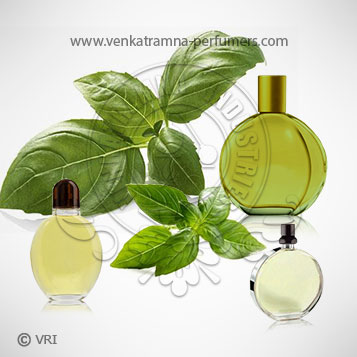
| Botanical Name | Ocimum basilicum |
| Common Name | Tulsi |
| Country of Origin | India |
| Solubility | Soluble in alcohol and oils. Insoluble in water. |
| Specific Gravity | 0.891 – 0.954 @ 20°C |
| Optical Rotation | -14.0 – -5.0 @ 20°C |
| Refrective Index | 1.4795 – 1.568 @ 20°C + |
| PlantPart | Leaves |
| Bland With | This essential oil blends well with Bergamot, Clary Sage, Clove Bud, Lime, Eucalyptus, Juniper, Lemon, Neroli, and Rosemary |
| CAS No | 8015-73-4 |
| Flash Point | 167 °F/75 deg. C. |
| Extraction Method | Supercritical CO2 Extraction |
Basil is an annual herb that grows up to 20-50 cm with purple- white flowers, appears in clusters. The plant is framed by oval pointed green leaves. It is considered sacred in India and widely used for its medicinal properties.
In Greek its name means 'royal remedy' or 'king'. In the 16th century, powdered basil was used to treat migraines and chest infections. There are many rituals and beliefs associated with basil, which is native to Africa and Asia. The ancient Egyptians believed that it would open the gates of heaven to a dying person, and the Hindus use Basil sprigs to protect the dead from evil while in transition between lives. Western European lore sometimes claimed that it was a symbol of evil, while the Eastern Orthodox Church used it in the making of holy water
Color : Pale yellow to amber color liquid. Sweet vaguely anise-like minty smoky odor.,
Aroma : Basil Oil is very famous for its sweet flavor and aroma
It consists of aromatic volatile camphoraceous oil.
Basil is generally used fresh in cooked recipes and dried leaves are used as spice for flavoring and for extraction of essential oil. Basil oil is extensively used in perfumery compounds and in areas of medicine.